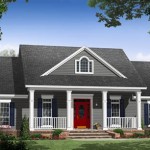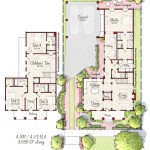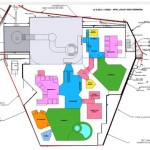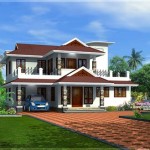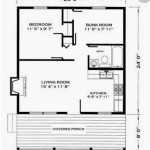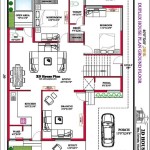Understanding the Essential Elements of 2 Level House Floor Plans
Designing a 2-level house requires careful consideration of the floor plan to ensure optimal functionality and aesthetics. Here are the key elements to keep in mind:
1. Flow and Circulation
The flow of movement within the house should be smooth and logical. The main entrance should lead into a central area that connects to different functional spaces. Avoid creating dead-end rooms or awkward transitions between levels.
2. Functionality and Space Allocation
Allocate space efficiently based on the needs and habits of the occupants. Designate areas for living, dining, cooking, sleeping, and other essential activities. Consider the future use of spaces and provide enough storage and flexibility for potential changes.
3. Natural Lighting and Ventilation
Maximize natural lighting by incorporating windows and skylights. Position windows strategically to allow sunlight to penetrate into the house and create a bright and airy atmosphere. Provide adequate ventilation through cross-ventilation or mechanical systems to ensure a healthy indoor environment.
4. Staircase Design
The staircase should be safe, comfortable, and aesthetically pleasing. Consider the width, height, and tread depth of the stairs, as well as the handrails and any landings. The staircase should also blend seamlessly with the overall design of the house.
5. Balcony and Terrace Inclusion
Incorporating balconies or terraces into a 2-level house plan can extend the living space outdoors and provide additional areas for relaxation and entertainment. These features can also enhance the visual appeal of the house and connect it to the surrounding environment.
6. Storage and Utility Areas
Provide ample storage solutions throughout the house, including closets, built-in shelves, and pantries. Designate a dedicated space for utilities, such as the laundry room, mechanical equipment, and storage for tools and equipment.
7. Exterior Connectivity
The floor plan should consider the exterior spaces and create seamless transitions between indoors and outdoors. Design patios, decks, or courtyards that connect to the living areas and provide spaces for outdoor dining, relaxation, and recreation.
8. Structural Considerations
The floor plan must adhere to building codes and accommodate the structural requirements of the house. The layout should be planned in a way that allows for efficient construction and minimizes potential structural issues.
9. Material Selection
The materials used for the floors, walls, and ceilings can impact the overall aesthetic and functionality of the house. Consider durability, maintenance requirements, and aesthetic preferences when selecting materials.
10. Energy Efficiency
Design the floor plan with energy efficiency in mind. Orient the house to take advantage of natural light and ventilation, consider energy-efficient appliances and lighting systems, and incorporate insulation to reduce energy consumption.
By considering these essential elements, you can create a 2-level house floor plan that meets the specific needs and aspirations of the occupants, while also ensuring functionality, aesthetics, and long-term livability.
Unique Two Story House Plan Floor Plans For Large 2 Homes Desi

Unique Two Story House Plan Floor Plans For Large 2 Homes Desi Family Blueprints Victorian

2 Level House Plan For Israel

Custom 2 Story Houses New Two Home Plans Housing Development D House Layout Sims Layouts

2 Level House Plans Distinctive Homes Double Y Modern Two Designs Floor Catalog

Unique Two Story House Plans Floor For Luxury Homes Design New

Small 2 Y House Plans Pinteres Two Story Floor Double

2 Story House Plans For Narrow Lots Blog Builderhouseplans Com

Two Story Home Floor Plan

Contemporary Floor Plan 3 Bedrms 5 Baths 3404 Sq Ft 146 2953


